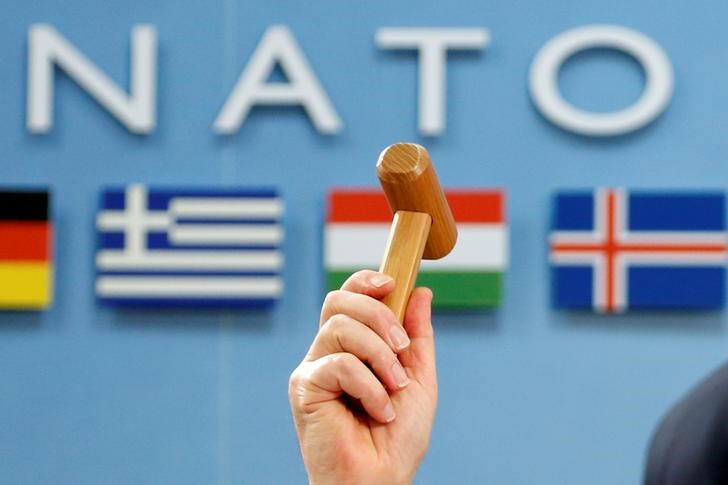Raytheon awarded $71 million in Navy contracts for missile systems
INvesting.com -- NATO’s newly adopted pledge to raise defense spending to 5% of gross domestic product (GDP) by 2035 is set to nearly double annual expenditures across the alliance to $3.0 trillion, according to BTIG Research.
The commitment, formalized at the 2025 NATO Summit in The Hague, breaks down into 3.5% for “core defense,” including personnel, operations and maintenance, and military equipment, and 1.5% for infrastructure and industrial expansion.
All member states except Spain agreed to the pledge. The United States is not expected to comply, with President Donald Trump arguing that U.S. contributions already exceed fair share.
As of 2024, NATO members collectively spent $1.5 trillion on defense, or 2.7% of GDP. The U.S. provided two-thirds of that amount, followed by Germany and the U.K.
Defense spending grew 14% year-over-year, driven largely by European allies, which increased budgets by 22% following Russia’s 2022 invasion of Ukraine.
If the 3.5% core defense target is met across NATO members excluding Spain and the U.S., total core defense spending could reach $24.2 trillion between 2025 and 2035.
Of that, $13.9 trillion would be from the U.S., assuming it maintains current levels around 3.3% of GDP. The remaining $10.3 trillion would come from other NATO members.
Military equipment accounts for about 32% of current defense spending. If that share holds, NATO could spend approximately $8.8 trillion on equipment over the next decade.
Nearly all members already meet the requirement to spend at least 20% of their defense budgets on major equipment and R&D, with the exceptions of Belgium and Canada.
European countries have limited defense manufacturing capacity, which may sustain reliance on U.S. contractors.
BTIG estimates U.S. firms could capture up to two-thirds of European NATO equipment spending through 2035, representing a $2.7 trillion export opportunity.
That is nearly double the $1.4 trillion estimated under the prior 2% GDP spending baseline.
Infrastructure investments are expected to rise sharply, as no member currently spends near the 1.5% target.
Estonia and Lithuania lead but only allocate about 0.3% of GDP to defense infrastructure.
The new spending is intended to upgrade military transport routes, enhance cybersecurity, and protect energy systems.
Poland is the only NATO member currently meeting the full 3.5% core defense threshold. No country reaches the 1.5% infrastructure level.
The U.S.’s share of NATO defense spending could fall to just over 50% by 2035, down from two-thirds in 2024.
